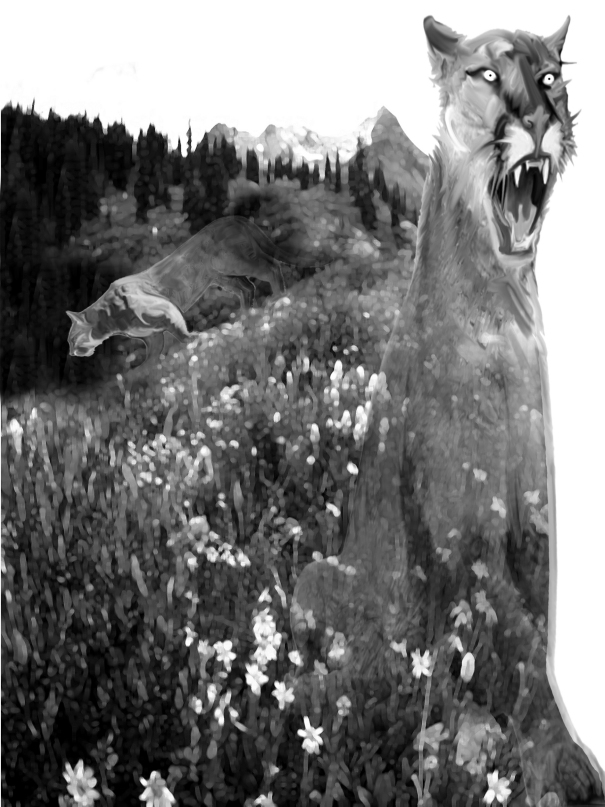
Mountain lyin'
By Gary Wockner
April 10, 2004
Another fatal mountain lion attack.
Catch your attention? That's the point. The truth, on the other hand, is a different story, as always.
News of the
dreaded BEAST has swirled in the media for the past several months. It started
with the fatal mountain lion attack in California last fall. The recent
publication and wide review of David Baron’s book, The Beast in the Garden,
fueled the fire. Like the media reports of the California mauling, Baron’s
book and its reviews paint a ridiculous, grossly exaggerated, paranoid portrait
of human encounters with mountain lions.
Much of Baron’s book discusses mountain lions in Boulder, Colorado, and
the fatal attack nearby in Idaho Springs in 1991. For the record, exactly
three people have been tragically killed by mountain lions in Colorado in
recorded history. The first was in Idaho Springs, the second in Rocky Mountain
National Park in 1997, and the third in Poudre Canyon in 1999. That’s a
grand total of three people out of ~4.5 million Coloradoans. If we generalize
over the 13 years since the first death, the odds of getting killed by a
mountain lion in any one year are roughly 1 in 19 million.
Here’s a little perspective, also tragic: According to the State of Colorado’s
Vital Statistics in 2002, the chances of dying of a heart attack or stroke
are 1 in 500, of cancer are 1 in 750, in a car wreck are 1 in 7,500, of suicide
are 1 in 7,500, of drugs/alcohol are 1 in 10,000, with a gun (murder or
accidental) are 1 in 10,000. The chances of dying of a work-related injury
are 1 in 50,000.
Given all that,
going for a hike in lion country doesn’t look so bad, and certainly looks
better than going to work.
I spent ten years hiking, running, and mountain biking in those Boulder
mountains almost everyday. I never saw one mountain lion, and never even
saw a mountain lion track. I had friends who saw mountain lions. One friend
walked up on a mountain lion eating a deer, and the lion sat licking its
bloody lips and didn’t even look at my friend thirty feet away.
I have another friend – a wildlife biologist – who tracks, traps, and
GPS-collars mountain lions for the Colorado Division of Wildlife along the
Front Range. She hires a houndsman with lion-sniffing bloodhounds and a
professional tracker, and they sometimes spend days and weeks without even
seeing a mountain lion. When they do find one, it’s the mountain lion that’s
paranoid and frightened. Later, when she goes out to study the
collared lions’ deer-kills, she actually walks up, alone and unarmed, with
a GPS receiver and watches the blip-blip on the GPS-screen of the lion frantically
racing away over the nearest ridge. She rarely sees them with her eyes.
I imagine
a mountain lion jumping on my back, its fangs diving into my neck, its claws
clinching in a death-grip. Then I imagine being slowly eaten. What a horrifying
image. Of course, it's less
likely than being struck by lightning (1 in 350,000) or winning the lottery
(1 in 250,000), but it sure makes great news, and a great read. It keeps
you on the same TV channel and keeps you turning pages of a book.
At about 4:00 pm, he walked out into the Boulder mountains intent on seeing a mountain lion. Earlier, he had practiced making the sound of an injured deer, and as he hiked he whimpered and whined. As dusk came and no lion appeared, The Skeptic became more intent. He rambled through the brush, off-trail-running and bleeting loudly. Dark came, hours went by, still no lion, and my friend became obsessed. He wandered through the night, bleeting and whining, and at one point started calling out, “Here kitty, kitty!” while flailing through the forest.
At 8:30 the next morning, a jogger on the Mesa Trail found my friend. He was delirious and sleep-deprived. He still hadn’t seen a mountain lion.
Quite a story. Ridiculous and grossly exaggerated, too. That's the point. It's fun, it kept you reading, and the chances are (the publisher assures me) two-to-one that you will keep turning the pages. The truth is a different story, as always.
_____
Gary Wockner (http://garywockner.com) is a wildlife ecologist and writer in Fort Collins, CO.
(mountain lion image by Joe Wagner/Rocky Mountain News.)